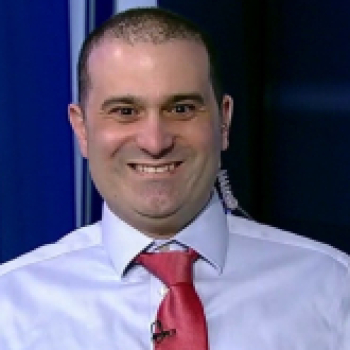Introductory statement by Mario Draghi, President of the ECB, Strasbourg, 1 February 2016
Mr Vice-President of the European Parliament,
Mr Vice-President of the Commission,
Honourable Members of the European Parliament,
We are undoubtedly at a point in time when the cohesion of Europe is being tested. Many of the challenges we must confront are European, or even global in nature. And these challenges demand a strong European response. I am therefore grateful to be back in this assembly, a symbol of the need for European debates and European solutions.
Today, we are discussing the Annual Report of the European Central Bank for 2014. In that year, the Governing Council adopted a series of measures to respond to the impairment of our monetary policy transmission channels and to the low inflation environment. These included two reductions in the key ECB interest rates, the announcement of targeted long-term refinancing operations and two purchase programmes for asset-backed securities and covered bonds. 2014 was also marked by the start of the activities of the Single Supervisory Mechanism and the completion of the comprehensive assessment.
But rather than looking backwards, allow me to focus on the challenges that still lie ahead of us.
First, I will briefly explain our current monetary policy and why we will re-assess our stance at our March meeting.
Second, I would like to discuss the economic challenges we face and what it takes to address them. I am acutely aware that the focus of policymakers lies elsewhere for the moment. But let me be quite clear: economic success is also part of the solution in other fields. Therefore, mitigating economic risks deserves to be high on the political agenda.
The ECB’s monetary policy: working and still flexible
It was about three years ago that inflation started moving away from the ECB’s medium-term inflation aim of below, but close to, 2%. Since October 2013, inflation has been below 1%. Throughout 2015 headline HICP inflation in the euro area was very low or even negative, remaining under the influence of low commodity prices, and euro area annual HICP inflation was estimated at 0.4% in January this year.
In parallel to this trend, we had to continually revise our outlook for inflation: while at the start of 2015, our staff was forecasting inflation to reach 1.5% in 2016 and 1.8% in 2017, in December they projected a rate of only 1% for this year and 1.6% for 2017.
Against this backdrop, the ECB decided in December to act again. Our assessment of the monetary policy stance had two parts. First, we noted that the measures put in place since the summer of 2014 had been very effective. The monetary stimulus that they introduced led to a broad-based easing of financing conditions, stimulated credit provision, and has since provided substantial support to the euro area recovery. Without these measures, the euro area would have been in outright deflation last year and prices would have fallen at an even quicker pace this year. Growth would have been significantly lower.
Second, while our measures were deemed effective, they were also judged to be insufficient in view of the deteriorating outlook for price stability. There was a concrete risk that without increasing the quantitative stimulus, the date by which inflation would settle around levels below, but close to, 2% would once more be pushed back beyond any relevant definition of medium term.
Therefore we decided to recalibrate our monetary policy stance. We cut the deposit facility rate further to -0.3%, we extended the envisaged end-date for our monthly purchases to the end of March 2017, while maintaining its conditionality on the inflation outlook, and we announced that we will reinvest the principal payments of our purchased assets once they mature, for as long as necessary. We also decided to continue conducting the main refinancing operations and three-month longer-term refinancing operations as fixed rate tender procedures with full allotment for as long as necessary, and at least until the end of the last reserve maintenance period of 2017.
Since our meeting in early December, conditions have once more changed. A moderate recovery of the euro area economy is under way, driven mainly by domestic demand. But downside risks have increased again amid heightened uncertainty about emerging market economies’ growth prospects, volatility in financial and commodity markets, and geopolitical risks. Inflation dynamics are also tangibly weaker than we expected in December. While the most recent wave of disinflation is mainly due to the renewed sharp fall in oil prices, weaker than anticipated growth in wages together with declining inflation expectations call for careful analysis of the channels by which surprises to realised inflation may influence future price and wage-setting in our economy.
Therefore, at our last meeting in January we judged that it will be necessary to review and possibly reconsider our monetary policy stance at our next monetary policy meeting in early March, when the new staff macroeconomic projections become available.
Strengthening the euro area recovery
Our monetary policy is working; and the ECB is willing to contribute its share to ensuring that the recovery remains firmly on track. But there are risks that – if they were to materialise – could undermine its course. The policy challenges we face are fourfold. They relate to: the global environment; the situation of the financial system; the economic and fiscal policies of Member States; and the political uncertainty surrounding the European project.
First, as regards the global environment: growth prospects are slowly improving in advanced economies, but the outlook in emerging markets is more subdued. Overall, growth is low by historical standards. Moreover, emerging markets are facing economic and financial risks: some are suffering from structural impediments and macroeconomic imbalances; others have to adjust to lower commodity prices. They remain vulnerable to an abrupt shift in risk sentiment that could tighten financing conditions. A key issue is how emerging markets will be impacted by tighter financing conditions (and the ensuing capital outflows) and to what extent this will have repercussions for euro area foreign demand. Against this background, ensuring the continued resilience of the euro area economy is paramount.
Second, there are policy challenges related to our financial markets. The euro area financial system weathered several episodes of stress in the second half of last year. This is a sign that a lot has already been achieved with the establishment of banking union, which, however, is not complete yet. To make our financial system truly safe and sound we need to progress in two main domains, which complement each other. On the one hand, we need to finalise and implement the work we started when establishing the Single Supervisory Mechanism and Single Resolution Mechanism as the initial pillars of banking union. This includes further regulatory work to harmonise our rules for supervisory action and ensure a consistent application of the Bank Recovery and Resolution Directive’s bail-in provisions. On the other hand, we need a common public backstop for the Single Resolution Fund to strengthen its credibility and we need to ensure that confidence in the safety of deposits is equally high in all euro area Member States by establishing a European Deposit Insurance Scheme. “Risk-reduction” and “risk-sharing” measures are two sides of the same coin and should be pursued in parallel: they are all essential to protecting the stability of the European banking sector.
Third, there are challenges related to the fiscal and economic policies of Member States that require decisive policy action. Fiscal policies should contribute to the economic recovery. At the same time, they should be in full compliance with the requirements of the Stability and Growth Pact. This is important to maintain confidence in the European fiscal framework and in the sustainability of public finances. Moreover, countries would benefit from a more growth-friendly composition of fiscal policies. This could involve greater efficiency of public sector services as well as moving to a more growth-friendly tax system.
But the ongoing cyclical recovery in the euro area should also be supported by effective structural policies, particularly actions to improve the business environment, including the provision of an adequate public infrastructure. Such actions are vital to increase productive investment, boost job creation and raise productivity. If reforms are credible, carefully chosen and well designed, their positive effects can be felt quickly, particularly in the context of our supportive monetary policy stance.
Fourth and finally, there is still political uncertainty surrounding the European project. This is true in the broader context of our Union. A solution that would anchor the United Kingdom firmly within the EU while allowing the euro area to integrate further would boost confidence. The Economic and Monetary Union architecture also remains an unfinished construction. Citizens and markets are too often unsure about our capacity to act jointly in a spirit of common responsibility. We should prove them wrong.
Let me conclude and come back to the subject of our debate, your resolution on our Annual Report for 2014. Let me assure you that we are reading this document closely. It reminds us of our duty as a public institution to conduct our business in a transparent and accountable manner. The publication of the diaries of Members of the Executive Board that starts this month is only one example of this.
I am now looking forward to the debate and thank you for your attention.
European Central Bank








Add a Comment
We encourage you to use comments to engage with other users, share your perspective and ask questions of authors and each other. However, in order to maintain the high level of discourse we’ve all come to value and expect, please keep the following criteria in mind:
Enrich the conversation, don’t trash it.
Stay focused and on track. Only post material that’s relevant to the topic being discussed.
Be respectful. Even negative opinions can be framed positively and diplomatically. Avoid profanity, slander or personal attacks directed at an author or another user. Racism, sexism and other forms of discrimination will not be tolerated.
Perpetrators of spam or abuse will be deleted from the site and prohibited from future registration at Investing.com’s discretion.